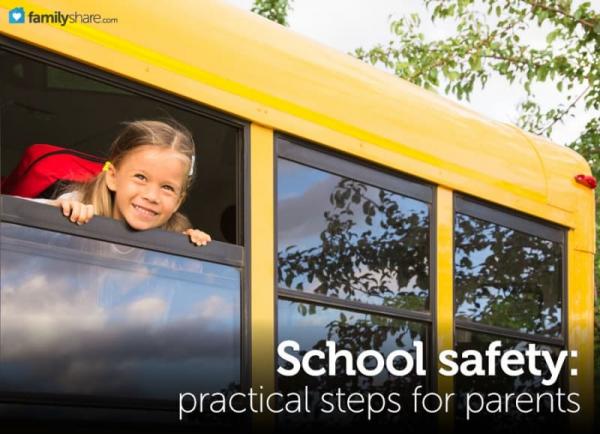
Many parents will not send children back to school with the same carefree ease of past years. With the headlines and news stories over the last few years it could hardly be otherwise. From the student abduction from a bus in Midland City, Ala., to the devastating tornado in Moore, Okla., to the horrible tragedies at Columbine, Nickle Mines, and Sandy Hook sending your kids back to school just doesn't seem as safe as it once was.
In many schools, changes in safety and security procedures will be apparent and likely a bit more inconvenient. Find out what the changes are and what your part in the new procedure is. Then smile, take a deep breath and remember school security and convenience are most often at opposite ends of the spectrum and a school should first be a castle keeping your kids safe.
And if nothing has changed, that should engender a conversation with your school administration, as well.
Parents across the country are aware of the safety concerns and potential threats like never before. Given all of the angst, the question becomes what are the effective, practical, common sense steps parents can take as a part of the back-to-school process to help make their student safer this year?
1. Keep the school informed
Update emergency contact information.
Even before school starts, during registration make sure that the information contained in your student's record is both correct and current. A minor mistake, say a transposed number during input, can render a critical phone number useless when most needed. Check the information in your student's record carefully.
Keep records current.
We live in a highly mobile society and information becomes dated rapidly. Remember to update your student's record when changes occur. This includes not only changes for you, but for everyone listed as a potential emergency contact for your student. Remember these are the folks your school will try to contact if you are not available.
Coordinate special circumstances.
Should there be any special needs or unique issues for your student or family - and this can run the gamut from special medical conditions to custody issues - make sure they are a part of your student's record. Then have a conversation with your school's administration to be certain they are aware of your needs.
2. Be informed
Ask your school about their emergency operations procedures. This should include such questions as: How will I be notified of an emergency? What kind of information can I expect and how will I receive it? If the school is evacuated where will my child be taken? How will they be returned to me? And possibly the most important question: What are the school's expectations of me, as a parent, during an emergency?
Emergencies of all magnitudes occur at schools across the nation on a regular basis, everything from loss of power or water to severe weather, hazardous materials, fire or even, though highly unlikely, school violence. With all of the possibilities this becomes one of the most crucial conversations to have with your child's school officials.
3. Be aware
Parking lots are dangerous.
One of the most congested and dangerous roadways in your area for 20 minutes twice a day through the school week is the parking lot of your local school. Schools, particularly elementary schools were once largely walking destinations. Not the case anymore. Most older schools were poorly designed for the amount of traffic they now experience.
Be smart and safe in the parking lot.
Large cars and small children in close proximity have the potential to be a recipe for disaster. Contact your school and find out about their student drop-off and pick-up procedure. If you drive your student, be prepared for some delays and consider a carpool to help lessen the congestion. And if you use the parking lot, never let small children walk from the parking lot to the school unaccompanied.
Use the bus.
Statistically, the safest way to get a student to school is the big yellow school bus. If your child is eligible for bus transportation strongly consider it. The weak link in student supervision is, generally, the bus stop. Plan on going to the bus stop with your student, adult eyes will go a long way to deter any unwanted behavior. Chances are you will meet other parents there and can plan to share this duty, as well.
Plan ahead and practice.
If your student walks or rides a bike to school plan to walk or ride the route with them prior to the start of school. This will allow you to look for any hazards and teach safe walking and riding habits. Consider starting a Walking School Bus or Bike Train program for your neighborhood. More information on this can be found on the National Safe Routes to School web site.
4. Speak up
One of the easiest and most practical school safety steps you can and should take, if you see something, say something. It sounds simplistic but this is one of the most effective tools a school community has to help increase safety and security. If something appears suspicious, it likely is. Make a phone call; don't assume that someone else will. School officials and local law enforcement would rather respond to a false alarm than miss responding to a real incident.
As Labor Day approaches, and you send your kids back to school, think of the words of an old TV cop show, "Remember, be safe out there."�

